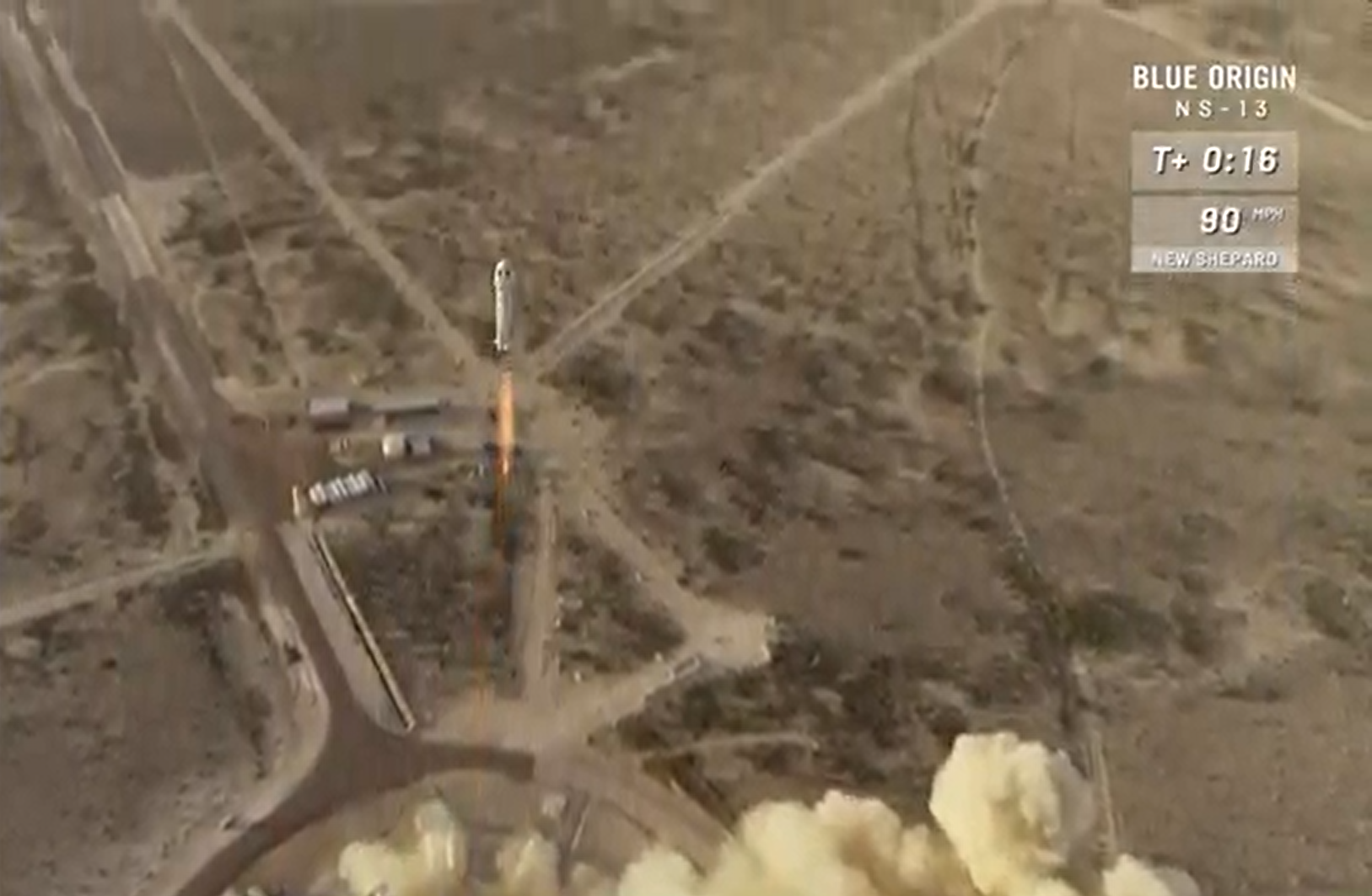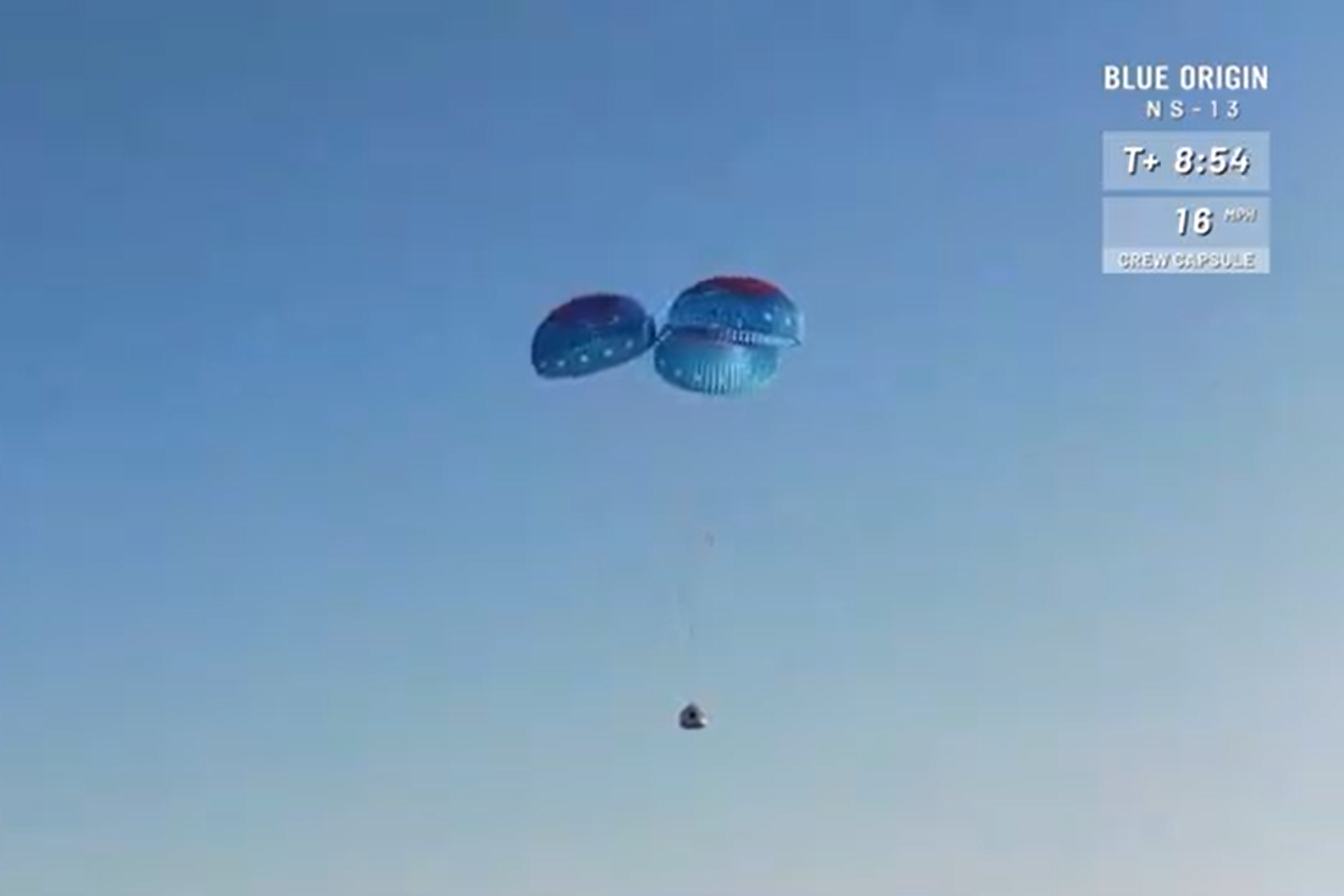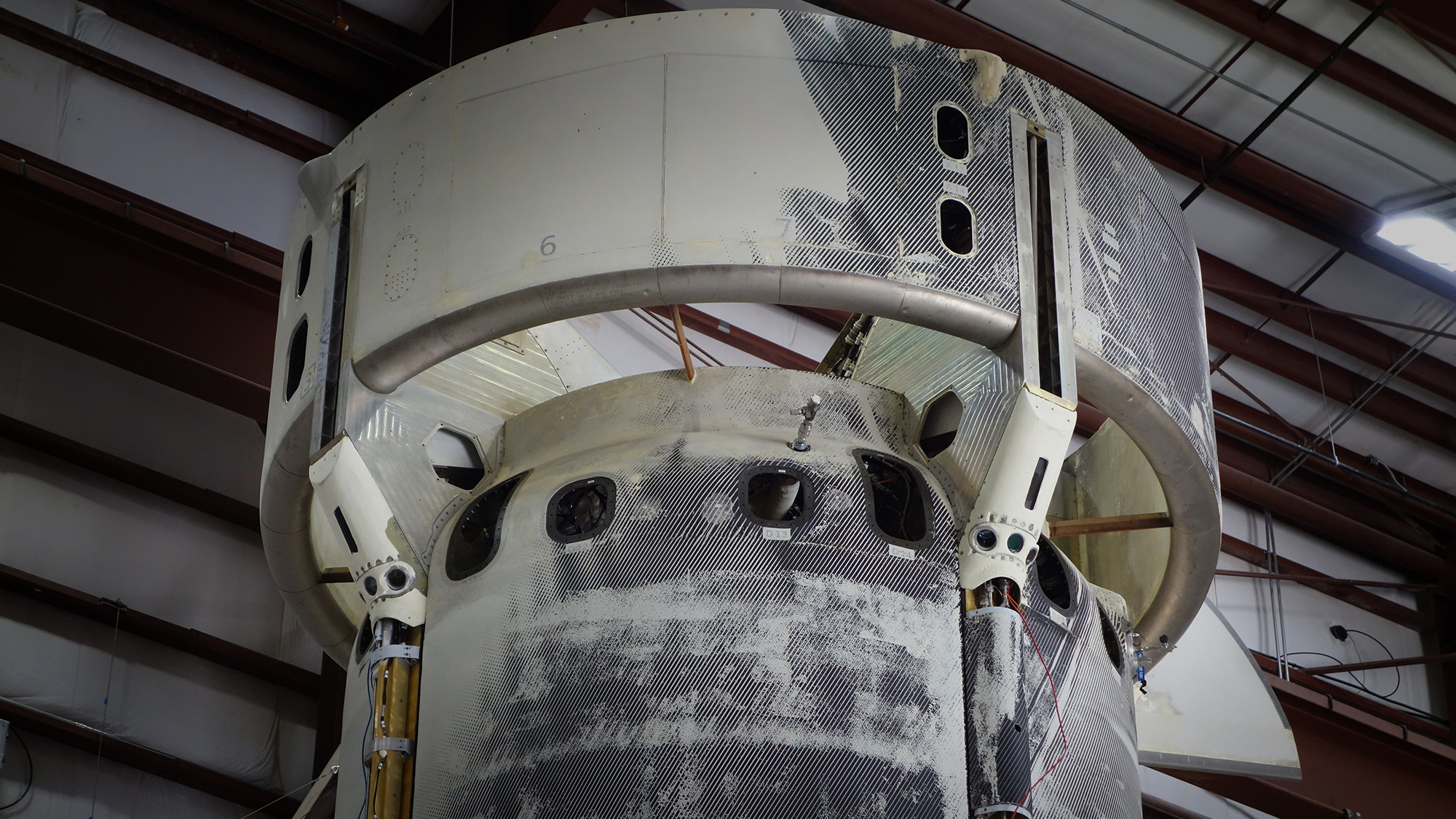Blue Origin's New Shepard rocket aces record 7th launch, landing in test flight
The company plans to send tourists into space with the reusable rocket.
Blue Origin successfully launched its New Shepard rocket on an uncrewed test flight over West Texas today (Oct. 13).
The uncrewed New Shepard launch vehicle, which consists of a reusable rocket and space capsule, lifted off from the company's West Texas launch facility at 8:36 a.m. CDT (9:36 a.m. EDT; 1336 GMT). After separating from the rocket booster, the capsule gently parachuted back down to Earth while the booster executed a flawless vertical landing.
Today's test mission, called NS-13, was the seventh consecutive test flight of this particular rocket booster and the 13th flight for Blue Origin's New Shepard program. The private spaceflight company, which was founded in 2000 by Amazon CEO Jeff Bezos, plans to use New Shepard to launch commercial passengers into suborbital space.
Related: Blue Origin's amazing NS-11 New Shepard test flight in photos
"Touch DOWN, New Shepard here we go," Blue Origin's Caitlin Dietrich said as the booster returned to Earth about 8 minutes after liftoff. "That never gets old."
The capsule also landed cleanly, a bit more than 10 minutes after blastoff. "Congratulations to Team Blue today," Dietrich said. "I'm a little bit out of breath, this is really exciting, but it sounds like everything went well today."





For the NS-13 mission, New Shepard carried 12 science payloads to space and back. One of those payloads was NASA's Deorbit, Descent and Landing Sensor Demonstration, which was the first payload to ever ride to space on the New Shepard capsule's exterior rather than inside the spacecraft. The experiment will help develop new landing technologies for NASA's Artemis program, which aims to put humans back on the moon in 2024.
Get the Space.com Newsletter
Breaking space news, the latest updates on rocket launches, skywatching events and more!
"The experiment will verify how these technologies (sensors, computers, and algorithms) work together to determine a spacecraft’s location and speed as it approaches the moon, enabling a vehicle to land autonomously on the lunar surface within 100 meters of a designated point," Blue Origin officials said in a statement.
"The technologies could allow future missions — both crewed and robotic — to target landing sites that weren't possible during the Apollo missions, such as regions with varied terrain near craters," the statement added. (Blue Origin is also leading a national team that's developing a human-rated moon lander for Artemis.)
Other payloads on NS-13 include a floating plant growth system called µG-LilyPond, a new system for sampling asteroids in low-gravity environments, and new cooling technology for keeping spacecraft from overheating.
Blue Origin also sent tens of thousands of postcards to space and back as part of the NS-13 mission. The postcards were written and submitted by grade school students via Blue Origin's nonprofit organization, Club for the Future.
On #NewShepard NS-13 the capsule will also carry tens of thousands of postcards from students around the world created for our nonprofit @clubforfuture. Some of the postcards flying will get a special @NASA #Artemis stamp to inspire students about the gift of the 🌕. pic.twitter.com/R0Cbto88vYSeptember 22, 2020
Today's launch was rescheduled from Sept. 24, when a power glitch to the payloads forced Blue Origin to scrub the flight.
With 13 test flights under its belt, New Shepard could soon start carrying commercial passengers on 10-minute space tourism flights to suborbital space. But Blue Origin has not yet announced the date of its first crewed test flight, and the company has not yet started to sell tickets.
Email Hanneke Weitering at hweitering@space.com or follow her on Twitter @hannekescience. Follow us on Twitter @Spacedotcom and on Facebook.
Join our Space Forums to keep talking space on the latest missions, night sky and more! And if you have a news tip, correction or comment, let us know at: community@space.com.

Hanneke Weitering is a multimedia journalist in the Pacific Northwest reporting on the future of aviation at FutureFlight.aero and Aviation International News and was previously the Editor for Spaceflight and Astronomy news here at Space.com. As an editor with over 10 years of experience in science journalism she has previously written for Scholastic Classroom Magazines, MedPage Today and The Joint Institute for Computational Sciences at Oak Ridge National Laboratory. After studying physics at the University of Tennessee in her hometown of Knoxville, she earned her graduate degree in Science, Health and Environmental Reporting (SHERP) from New York University. Hanneke joined the Space.com team in 2016 as a staff writer and producer, covering topics including spaceflight and astronomy. She currently lives in Seattle, home of the Space Needle, with her cat and two snakes. In her spare time, Hanneke enjoys exploring the Rocky Mountains, basking in nature and looking for dark skies to gaze at the cosmos.
-
Erik #13 ... to SPACE ??... ALL flights have been SUB orbital, barely breaking theReply
Karman line... -
Ryan F. Mercer ReplyErik said:#13 ... to SPACE ??... ALL flights have been SUB orbital, barely breaking the
Karman line...
It is in reference to the lunar lander they won a contract for, not the New Shepard rocket.
"...New Shepard carried 12 science payloads to space and back. One of those payloads was NASA's Deorbit, Descent and Landing Sensor Demonstration... The experiment will help develop new landing technologies for NASA's Artemis program... 'The experiment will verify how these technologies (sensors, computers, and algorithms) work together to determine a spacecraft’s location and speed as it approaches the moon...'"
I get what you're saying though. Much about Blue Origin is still on the drawing boards only, and while New Shepard might be an excellent suborbital rocket, it is only that. They're getting great results, but their development time is slow. Talk to me when they have another prototype. -
monkeyonmars Bezos should find a Musk and Shotwell to lead his company - Bob Smith? must be an old space veteran.Reply









